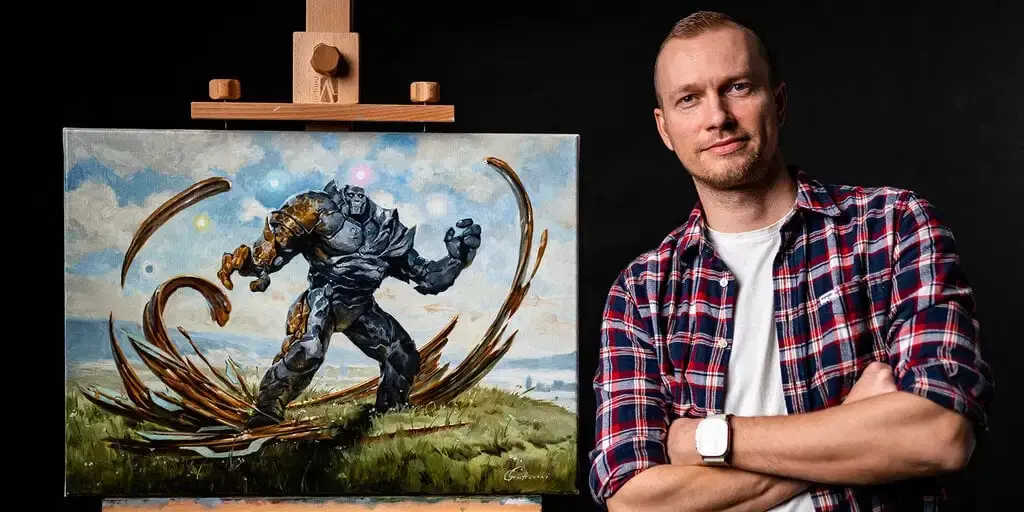Greg Rutkowski, a digital artist known for his surreal style, opposes AI art but his name and style have been frequently used by AI art generators without his consent. In response, Stable Diffusion removed his work from their dataset in version 2.0. However, the community has now created a tool to emulate Rutkowski’s style against his wishes using a LoRA model. While some argue this is unethical, others justify it since Rutkowski’s art has already been widely used in Stable Diffusion 1.5. The debate highlights the blurry line between innovation and infringement in the emerging field of AI art.



If I run an image from the web through a program that generates a histogram of how bright its pixels are, am I suddenly a dirty pirate?
If you run someone’s artwork through a filter is it completely fine and new just because the output is not exactly like the input and it deletes the input after it’s done processing?
There is a discussion to be made, in good faith, of where the line lies, what ought to be the rights of the audience and what ought to be the rights of the artists, and what ought to be the rights of platforms, and what ought to be the limits of AI. To be fair, that’s a difficult situation to determine, because in many aspects copyright is already too overbearing. Legally, many pieces of fan art and even memes are copyright infringement. But on the flipside automating art away is too far to the other side. The reason why Copyright even exists, at least ideally, is so that the rights and livelihood of artists is protected and they are incentivized to continue creating.
Lets not pretend that is just analysis for the sake of academic understanding, there is a large amount of people who are feeding artists’ works into AI with the express purpose of getting artworks in their style without compensating them, something many artists made clear they are not okay with. While they can’t tell people not to practice styles like theirs, they can definitely tell people not to use their works in ways they do not allow.
No, that’s a derivative work. An analysis of the brightness of the pixels is not a derivative work.
Sure, but the people crying “You’re stealing art!” are not making a good faith argument. They’re using an inaccurate, prejudicial word for the purpose of riling up an emotional response. Or perhaps they just don’t understand what copyright is and why it is, which also puts their argument in a bad state.
Case in point. That’s not why copyright exists. The reason for the American version of copyright is established right in the constitution: “To promote the progress of science and useful arts”. If you want to go more fundamental than just what the US is up to, the original Statute of Anne was titled “An Act for the Encouragement of Learning”.
The purpose of copyright is not to protect the rights or livelihood of artists. The protection of the rights and livelihood of artist is a means to the actual purpose of copyright, which is to enrich the public domain by prompting artists to be productive and to publish their works.
An artist that opposes AIs like these is now actively hindering the enrichment of the public domain.
Wow… so in your mind there is basically no copyright and nobody owns anything. That is incredibly reductive and completely ignores centuries of legal precedence since the constitution was written.
You are basically claiming that anything that is ever put on display anywhere, ever is public domain and that piracy doesn’t exist.
No, I’m not claiming that and I have no idea how you’re managing to come to that conclusion from what I wrote. There’s no connection I can discern.
Because it’s a required assumption to make anything you say on the subject make any sense. The fact that you deny that had convinced me that you’re just a troll.
A histogram cannot output similar images, it’s pointless to argue the fine details of an analogy that doesn’t apply to begin with
To call it “stealing” might be inaccurate, but are the artists wrong to say that their intellectual property rights are being violated, when people using their works without consent to train AIs with the express purpose of replicating those artists’ works? I have seen several artists pointing out AI users who brag to them that they are explicitly training AIs using those artists’ galleries and show that it’s outputting similar works.
How is it “promoting the progress of useful arts” not the same as “incentivizing artists to continue creating”? Are you going to argue what’s “useful”? If there is interest in replicating artists’ styles with AI, then that is an admission the people doing it see use in those works. Otherwise, it’s the same, and protecting their livelihoods through the privilege of a temporary intellectual monopoly is how that promotion of arts is done.
I definitely see the value of the Public Domain, but if expanding it at any cost was the primary goal of copyright we wouldn’t have roughly century-long copyright. Which I don’t think is good per see but that’s another discussion. Still, the existence of copyright at all is a concession that grants that for artists and creators to develop their works and ultimately enrich humanity’s culture, they need to be able to control their works and have a guarantee to a stable career, to the extent that they can sell their own work. It’s a protection so that not everyone can show up imitating that artist and undercut them, undermining their capability to make new creative works. Which is what many people have been doing with AI.
If anything that could enrich the Public Domain was enough reason to drop Copyright, we wouldn’t have any Copyright. The compromise is that Public Domain as a whole will be enriched when the artist’s Copyright expires.